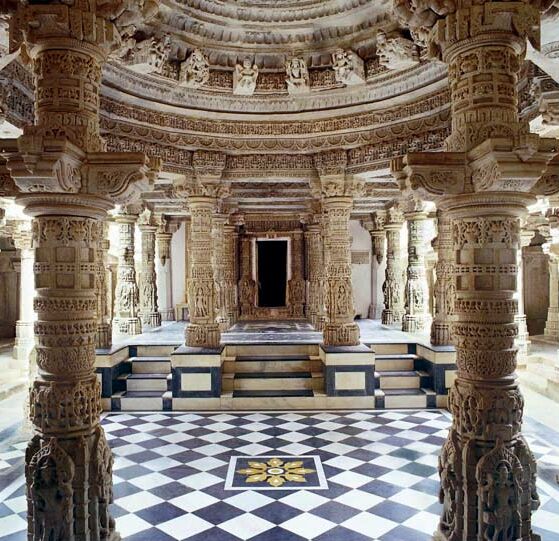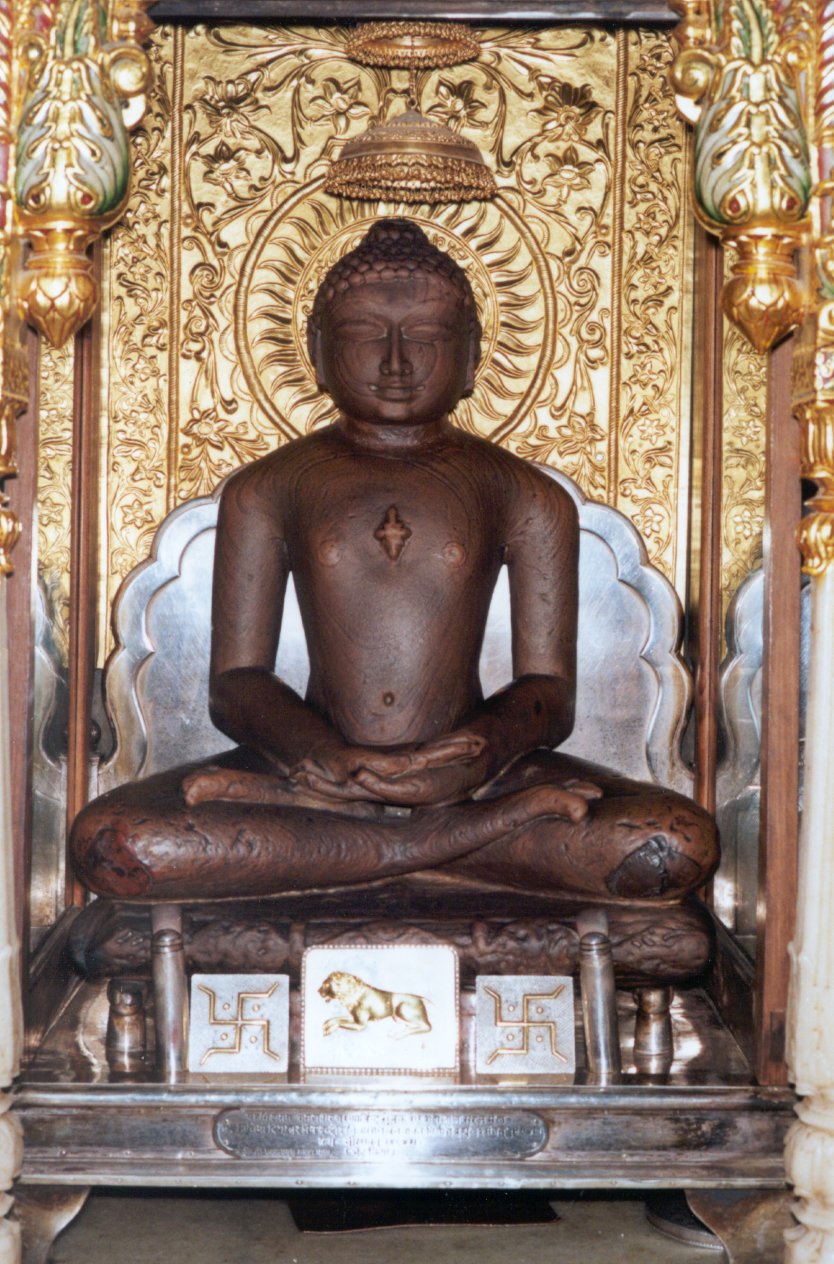|
Sammed Shikharji
Shikharji (), also known as Sammet or Sammed Shikharji, is one of the holiest pilgrimage sites for Jains, in Giridih district, Jharkhand. It is located on Parasnath hill, the highest mountain in the state of Jharkhand. It is the most important Jain Tirtha (pilgrimage site), for it is the place where twenty of the twenty-four Jain tirthankaras (supreme preachers of Dharma) along with many other monks attained Moksha. It is one of the seven principal pilgrimage destinations along with Girnar, Pawapuri, Champapuri, Dilwara, Palitana and Ashtapad Kailash. Etymology ''Shikharji'' means the "venerable peak". The site is also called Sammed Śikhar "peak of concentration" because it is a place where twenty of twenty-four Tirthankaras attained Moksha through meditation. The word "Parasnath" is derived from Lord Parshvanatha, the twenty-third Jain Tirthankara, who was one of those who attained Moksha at the site in 772 BCE. Geography Shikarji is located in an inland part of ru ... [...More Info...] [...Related Items...] OR: [Wikipedia] [Google] [Baidu] |
Jainism
Jainism ( ), also known as Jain Dharma, is an Indian religions, Indian religion whose three main pillars are nonviolence (), asceticism (), and a rejection of all simplistic and one-sided views of truth and reality (). Jainism traces its spiritual ideas and history through the succession of twenty-four , supreme preachers of ''dharma''. The first in the current time cycle is Rishabhadeva, who tradition holds lived millions of years ago; the 23rd is Parshvanatha, traditionally dated to the 9th century Common Era, BCE; and the 24th is Mahāvīra, Mahavira, who lived . Jainism is considered an eternal ''dharma'' with the guiding every time cycle of the Jain cosmology, cosmology. Central to understanding Jain philosophy is the concept of ''bhedavijñāna'', or the clear distinction in the nature of the soul and non-soul entities. This principle underscores the innate purity and potential for liberation within every Jīva (Jainism), soul, distinct from the physical and menta ... [...More Info...] [...Related Items...] OR: [Wikipedia] [Google] [Baidu] |
Kailash
Mount Kailash (also Kailasa; ''Kangrinboqê'' or ''Gang Rinpoche''; ; ; , ) is a mountain in Ngari Prefecture, Tibet Autonomous Region of China. It lies in the Kailash Range (Gangdisê Mountains) of the Transhimalaya, in the western part of the Tibetan Plateau. The peak of Mount Kailash is located at an elevation of , near the western trijunction between China, India and Nepal. Mount Kailash is located close to Manasarovar and Rakshastal lakes. The sources of four rivers: Indus, Sutlej, Brahmaputra, and Karnali lie in the vicinity of the region. Mount Kailash is sacred in Hinduism, Buddhism, Jainism and Bon religion. People from India, China, Nepal and other countries in the region undertake a pilgrimage to the mountain. The pilgrimage generally involves trekking towards Lake Manasarovar and a circumambulation of Mount Kailash. While the mountain has been surveyed by climbers in the past, there has been no recorded successful ascent of the mountain. The climbing of the ... [...More Info...] [...Related Items...] OR: [Wikipedia] [Google] [Baidu] |
Kalpa Sūtra
The ''Kalpa Sūtra'' () is a Jain text containing the biographies of the Jain Tirthankaras, notably Parshvanatha and Mahavira. Traditionally ascribed to Bhadrabahu, which would place it in the 4th century BCE, it was probably put in writing 980 or 993 years after the ''Nirvana'' ('' Moksha'') of Mahavira or 1230 years after the Nirvana of Tirthankar Parswanath. History Within the six sections of the Jain literary corpus belonging to the Śvetāmbara school, it is classed as one of the Cheda Sūtras. This Sutra contains detailed life histories and, from the mid-15th century, was frequently illustrated with miniature painting. The oldest surviving copies are written on paper in western India in the 14th century. The Kalpa Sutra is ascribed to Bhadrabahu, traditionally said to have composed it some 150 years after the ''Nirvāṇa'' ( samadhi) of Mahavira. It was compiled probably during the reign of Dhruvasena, 980 or 993 years after Mahavira's death. Importance The book is ... [...More Info...] [...Related Items...] OR: [Wikipedia] [Google] [Baidu] |
Mahavira
Mahavira (Devanagari: महावीर, ), also known as Vardhamana (Devanagari: वर्धमान, ), was the 24th ''Tirthankara'' (Supreme Preacher and Ford Maker) of Jainism. Although the dates and most historical details of his life are uncertain and varies by sect, historians generally consider that he lived during the 6th or 5th century BCE, reviving and reforming a proto-Jain community (which had possibly been founded by Pārśvanātha), and that he was an older contemporary of Gautama Buddha. Jains regard him as the spiritual successor of the 23rd ''Tirthankara'' Parshvanatha. According to traditional legends and hagiographies, Mahavira was born in the early 6th century BCE to a royal Kshatriya Jain family of ancient India. His mother's name was Trishala and his father's name was Siddhartha. According to the second chapter of the Śvētāmbara Ācārāṅga Sūtra, Siddhartha and his family were devotees of Parshvanatha. Mahavira abandoned all worldly p ... [...More Info...] [...Related Items...] OR: [Wikipedia] [Google] [Baidu] |
Jnatrdharmakathah
''Jnātadhārmakathāh'' is the sixth of the 12 Jain Angas said to be promulgated by Māhavīra himself. Jnātadhārmakathāh translated as "Stories of Knowledge and Righteousness" is said to have been composed by Ganadhara Sudharmaswami as per the Śvetāmbara The Śvetāmbara (; also spelled Shwetambara, Shvetambara, Svetambara or Swetambara) is one of the two main branches of Jainism, the other being the Digambara. ''Śvetāmbara'' in Sanskrit means "white-clad", and refers to its ascetics' practi ... tradition. Subject matter of the Agama It contains a series of narratives, from which morals about results of following the religious path are drawn. The Eighth Chapter gives the story of Lady Mallinatha the nineteenth Tirthankara, or according to the Digambara Jain, Lord Mallinatha. English translations Popular English Translations are :- Illustrated SRI JNATADHARMAKATHANGA SUTRA in 2 volumes Prakrit Gatha - Hindi exposition - English exposition and Appendices E ... [...More Info...] [...Related Items...] OR: [Wikipedia] [Google] [Baidu] |
Shatrunjaya
Shatrunjaya, also spelled Shetrunjaya ("place of victory against inner enemies") and originally known as Pundarikgiri, is a range of hills located near the city of Palitana in the Bhavnagar district of Gujarat, India. The hills are situated on the banks of the Shetrunji River at an elevation of approximately above sea level. These hills bear similarities to other locations where Jainism, Jain temples have been constructed, including those in Bihar, Gwalior, Mount Abu, and Girnar. The sacred Jain hill of Shatrunjaya is home to 865 temples. The site was sanctified when Rishabha, the first Tirthankara of Jainism, delivered his sermons on the summit. The ancient significance of the hills is also attributed to Pundalik, Pundarik Swami, a chief Ganadhara and the grandson of Rishabha, who is believed to have attained Nirvana or Moksha here. His shrine is located opposite the main temple of Adinath, which was built by Bharata, the son of Rishabha. Alternate spellings include ''Śatr ... [...More Info...] [...Related Items...] OR: [Wikipedia] [Google] [Baidu] |
Mount Abu
Mount Abu (), known as Arbudgiri in Jain tradition, is a hill station in the Aravalli Range in the Sirohi district of the state of Rajasthan in western India. Here, the mountain forms a rocky plateau 22 km long by 9 km wide. It is referred to as 'an oasis in the desert' as its heights are home to rivers, lakes, waterfalls and evergreen forests. It is also home to numerous Jain and Hindu temples. History The ancient name of Mount Abu is Arbuda. In the Puranas, the region has been referred to as ''Arbudaranya'' ("forest of ''Arbuda''") and 'Abu' is a diminutive of this ancient name. It is believed that sage Vashistha retired to the southern spur at Mount Abu following his differences with sage Vishvamitra. There is another history story according to which a serpent named "Arbuda" saved the life of Nandi (Lord Shiva's bull). The incident happened on the mountain that is currently known as Mount Abu and so the mountain is named "Arbudaranya" after that incident which grad ... [...More Info...] [...Related Items...] OR: [Wikipedia] [Google] [Baidu] |
Dilwara Temples
The Dilwara Temples or Delvada Temples are a group of Śvētāmbara Jain temples located about kilometres from the Mount Abu settlement in Sirohi District, Rajasthan's only hill station. The earliest were built by Vimal Shah , a Jain minister of Solanki king of Gurjaratra , Bhima I and additions to the temples were made by Vastupala, Jain minister of Vaghelas of Gurjaratra. They date between the 11th and 16th centuries, forming some of the most famous monuments in the style of Solanki architecture, famous for their use of a very pure white marble and intricate marble carvings. They are managed by Seth Shri Kalyanji Anandji Pedhi, Sirohi and are a pilgrimage place for Jains, and a significant general tourist attraction. The Dilwara temples are regarded as the most impressive among Jain temples in Rajasthan. Architecture The five Dilwara temples are among the most famous Jain temples. The Vimal Vasahi is much the earliest, constructed by 1031, with the Luna Vasa ... [...More Info...] [...Related Items...] OR: [Wikipedia] [Google] [Baidu] |
Mount Kailash
Mount Kailash (also Kailasa; ''Kangrinboqê'' or ''Gang Rinpoche''; ; ; , ) is a mountain in Ngari Prefecture, Tibet Autonomous Region of China. It lies in the Kailash Range (Gangdisê Mountains) of the Transhimalaya, in the western part of the Tibetan Plateau. The peak of Mount Kailash is located at an elevation of , near the western trijunction between China, India and Nepal. Mount Kailash is located close to Manasarovar and Rakshastal lakes. The sources of four rivers: Indus, Sutlej, Brahmaputra, and Karnali lie in the vicinity of the region. Mount Kailash is sacred in Hinduism, Buddhism, Jainism and Bon religion. People from India, China, Nepal and other countries in the region undertake a pilgrimage to the mountain. The pilgrimage generally involves trekking towards Lake Manasarovar and a circumambulation of Mount Kailash. While the mountain has been surveyed by climbers in the past, there has been no recorded successful ascent of the mountain. The climbing ... [...More Info...] [...Related Items...] OR: [Wikipedia] [Google] [Baidu] |
Digambara
''Digambara'' (; "sky-clad") is one of the two major Jain schools and branches, schools of Jainism, the other being ''Śvetāmbara'' (white-clad). The Sanskrit word ''Digambara'' means "sky-clad", referring to their traditional monastic practice of neither possessing nor wearing any clothes. Nakedness was the ideal practice of lord Mahavira and his immediate followers. Mahavira emphasized the importance of nakedness for monks. It symbolizes complete detachment and is an ideal form of conduct. Mahavira believed that renouncing clothes made the body immune to external influences like heat and cold, increasing resilience. Without clothes, a monk would avoid the distractions of acquiring, maintaining, and washing garments, allowing him to focus on spiritual growth and self-discipline. Digambara and Śvetāmbara traditions have had historical differences ranging from their dress code, their temples and iconography, attitude towards female monastics, their legends, and the texts the ... [...More Info...] [...Related Items...] OR: [Wikipedia] [Google] [Baidu] |







